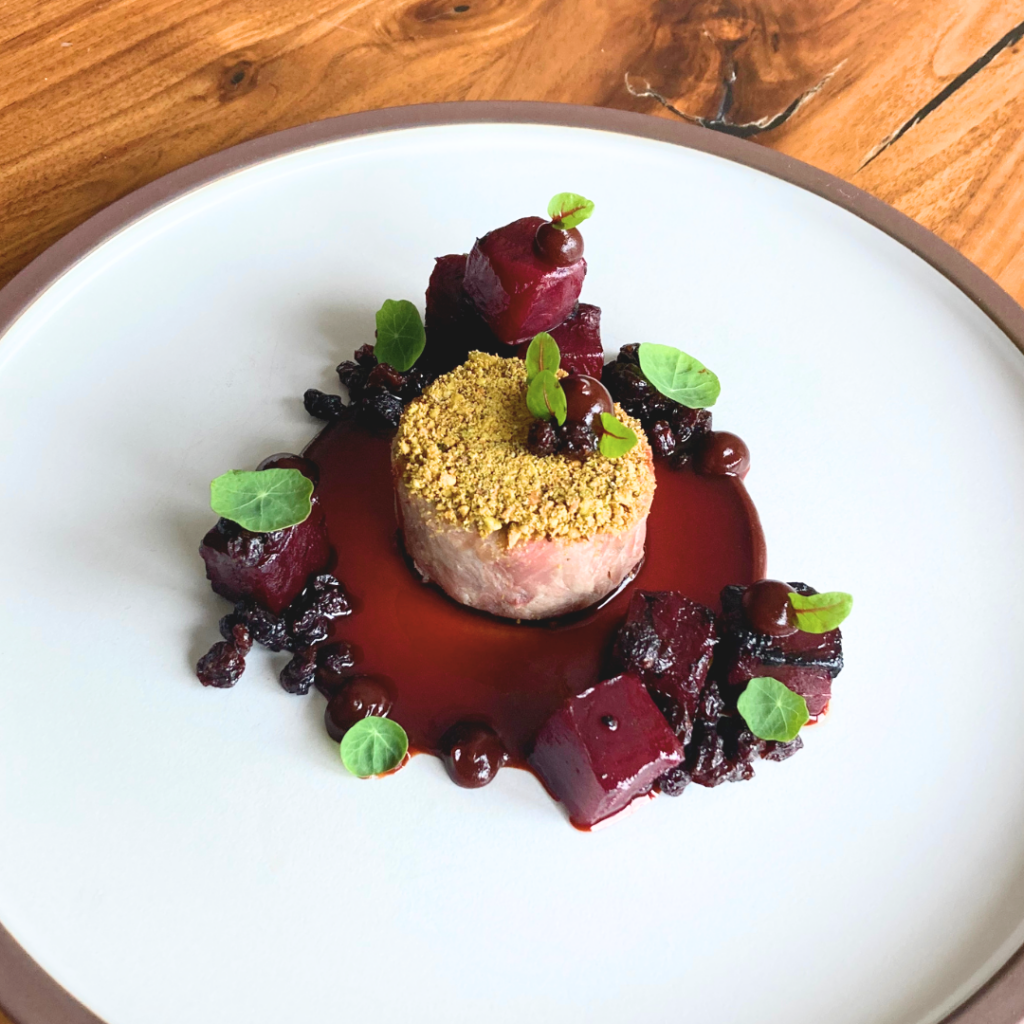
Looking to wow your guests at your next dinner party?
This recipe is technical but can be prepared ahead of time and is sure to impress.
Recipe by: Chef Danny Beaulieu, Änkôr Restaurant
Duck confit is a delicious but time-consuming dish. To ensure it’s perfect for your dinner party, you’ll need to plan ahead.
Several steps require multiple days of preparation, so be sure to factor that into your schedule.
Duck Confit with Black Currants
The rich, tender duck confit is elevated by the sweet-tart complexity of black currants.
Servings 6
Equipment
- Immersion circulator (sous-vide machine)
- Vacuum sealer (not required)
- Food processor (not required)
- Blender
- Squeeze bottle
Ingredients
Duck Cure - make ahead
- 8 duck legs
- 11 oz Kosher salt
- 5 oz brown sugar
- 1 1/4 tsp fresh thyme sprigs
- 1 tsp star anise, crushed
- 1 1/2 tsp cinnamon stick, crushed
- 1/2 tsp juniper berries, crushed
- 1 tbsp whole peppercorn
Duck Confit - make ahead
- 8 cured duck legs
- 250 grams duck fat (available at Urban Butcher, Blush Lane, Empire Provisions)
- 1 1/4 tsp fresh thyme sprigs
- 1 medium garlic clove, crushed
Pistachio Crumble - make ahead
- 3 1/2 oz shelled pistachios
- 1/8 tsp ground star anise
- 2/3 tsp Kosher salt
- 3/4 tsp dry spinach powder (find spinach powder at most health-food stores. Try Joy & Vitality Centre)
Macerated Black Currants - make ahead
- 5 1/4 oz dried black currants
- 1 3/4 oz Crème de Cassis liqueur
Black Currant Gel - make ahead
- 2 oz dried black currants
- 11 oz water
- 1/3 tsp citric acid
- 1/2 tsp agar agar powder
- 2 tsp Crème de Cassis liqueur
Demiglace - make ahead
- duck or veal demiglace (find veal demiglace at The Stock and Sauce Company)
- 1 tbsp butter to taste, cubes
Extras
- beets or other root vegetable as a side
- microgreens for garnish
Instructions
Duck Cure
- Mix all ingredients for the cure together in a bowl and rub all around the duck legs in that same bowl. Once all legs are covered, place them in a large resealable bag and use leftover cure mix to layer between them making sure to use all the cure.
- Leave in the fridge to cure for 48 hours flipping the bag upside down every 12 hours or so.
- Rinse the duck legs in running water and then soak in fresh water for 24 hours, changing the water 2 to 3 times. Make sure there is a good ratio of water to absorb the salt out of the legs properly.
- Take the legs out of water and let them dry in your fridge before going onto the confit part of this process.
Duck Confit
- Set your immersion circulator to 76 C (169 F).
- If you have a vacuum sealer, use this technique. If not, you can do the same step with a Ziploc bag and the water displacement technique.* Add duck legs to the bag of your preferred method with the duck fat, fresh thyme sprigs and crushed fresh garlic.
- Seal the bag and place it in your water bath for 14 hours. Make sure it is well submerged.
- After 14 hours, take the duck out of the water, strain out of the bag right away and take the meat off the bones, discarding the skin and the bones. Make sure to strain the liquid fat properly and save for later use.**
- Shred the meat a little smaller, roll it tight with cling wrap and put aside in either fridge or freezer for later use. You should get 2 rolls about 15 cm (6 inches) long and 5 cm (2 inches) in diameter.
Pistachio Crumble
- Start by roasting pistachios in the oven at 175 C (350 F) until lightly coloured. Let them cool down and chop in a blender with the ground star anise and salt.
Macerated Black Currents
- Place black currants in a vacuum-seal or resealable bag with the crème de cassis and cook sous vide at 63 C (145 F) for 1 hour then keep in the fridge until needed.
Black Currant Gel
- In a blender, place the dried black currants, water, and citric acid. Blend until smooth and add everything to a pot.
- Add the agar agar and bring the pot to a light bubbling. Let simmer slightly for a minute to make sure the agar agar is activated properly and place the liquid in the fridge in a different container.
- After the liquid has properly set in the fridge, place everything in a blender again with the crème de cassis and purée until you reach a smooth texture. The whole mixture might need a little bit more water to get properly smooth.
- Add mixture to a squeeze bottle and return to the fridge until ready to use.
Duck Demiglace
- We make our own at the restaurant and you are more than welcome to make your own, but usually for home purposes a good quality store-bought one will do just fine.
Serving
- Remove confit roll from fridge or freezer and cut into 5-cm (2-inch) thick slices. Place slices on a cooking sheet and warm in the oven with some of the duck fat at 175 C ( 350 F) for 8-10 minutes.
- Warm a prepared side vegetable of your liking. We use beets.
- Place demiglace in a saucepan and warm on low until it suits your preferred temperature. When it’s warm, whisk in 30 ml (1 Tbsp) of cold butter at a time until it reaches your preferred taste.
Plating
- Have your pistachio and macerated black currant at room temperature, ready to use. The gel can be cold from the fridge.
- Once all your components are almost ready, make a circle of black currant gel in the center of serving plates.
- Take duck confit out of the oven, cover top surface with pistachio mixture and place in the center of your circle. Plate your beets or vegetable of choice and macerated black currants around the circle.
- Spoon your demiglace inside of your gel circle to keep everything in place. Garnish with micro greens if desired and serve.
Notes
* Water displacement technique: Seal your Ziploc bag almost completely, leaving a small hole for air to escape. Slowly submerge the bag into the immersion circulator, squeezing the air out as you go. When the food is completely submerged, squeeze out the last of the air.
** Rendered duck fat will keep in a sealed container in the fridge for up to one month
or in the freezer for up to six months.
or in the freezer for up to six months.


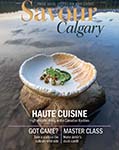

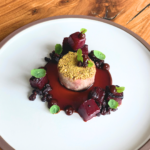
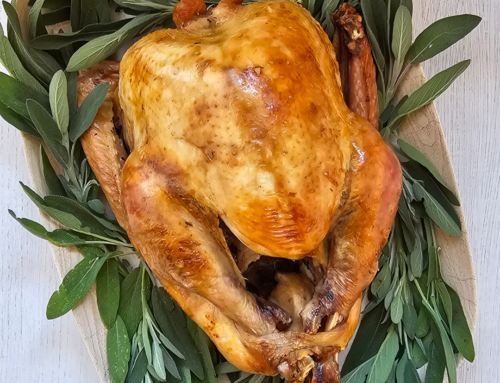
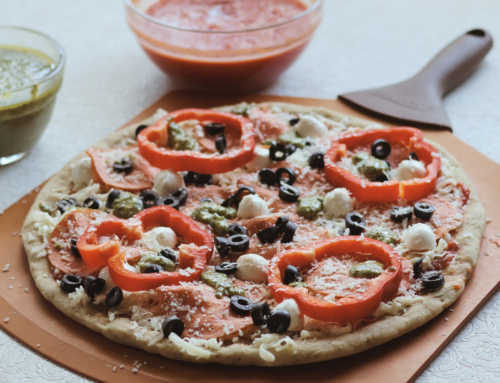
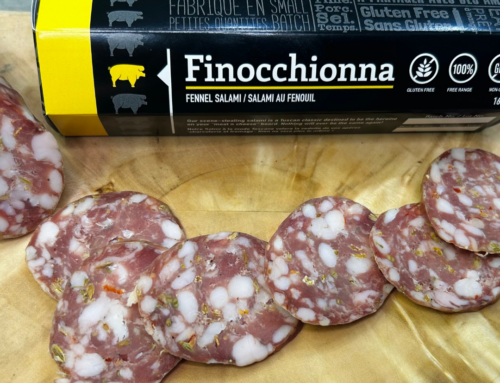
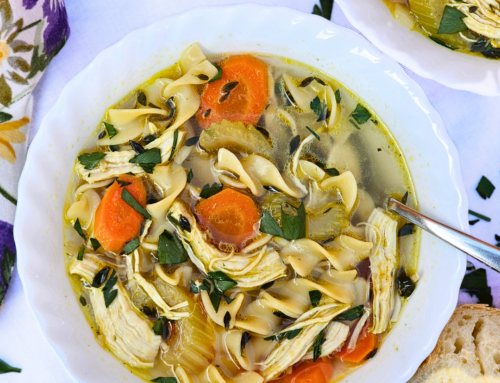
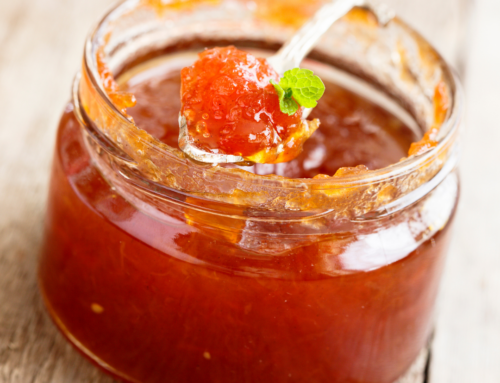
Leave A Comment